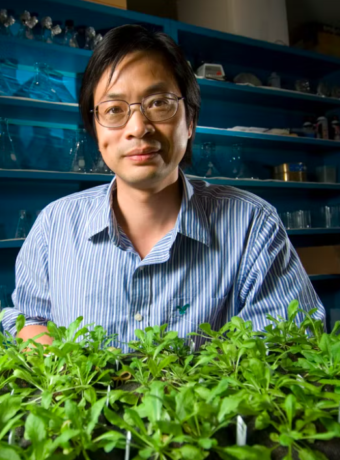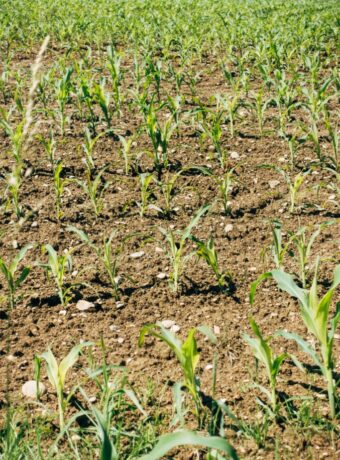This week’s ‘Global Food System Bite’ comes from an article titled Go and Tell the Hungry that Their Food Is Being Thrown in the Garbage.
According to the World Bank, an estimated 1.3 billion tons of food is wasted and lost every single year. That is the equivalent of one ton per each of the one billion hungry people in the world, many of whom are those who produced the food. The findings have been reported in the World Bank’s recent study: What a Waste 2.0. The study also found that the number of wasted calories “could fill hunger gaps in the developing world.” These findings underscore the need for greater efforts to reduce food waste and loss, and to ensure that food is distributed more evenly around the globe.
For a bit more context, “with a much bigger population than Europe, a similar amount of calories is reported as wasted in industrialised Asia (746), compared to 414 in South and Southeast Asia. Subsaharan Africa and Central Asia register 545 wasted calories per person and day, and Latin America 453,” according to the World Bank’s report.
On this year’s International Day of Awareness on Food Loss and Waste Reduction, on the 29th of September, the United Nations reported that reducing food losses and waste is essential in a world where the number of people affected by hunger has been slowly on the rise since 2014, and tons and tons of edible food are lost and/or wasted … every day.
There are a number of reasons why food is lost or wasted. In developing countries, post-harvest losses are often high due to a lack of storage facilities and poor infrastructure. In developed countries, food is often wasted at the retail level due to strict cosmetic standards. For example, supermarkets in Europe reject around 30% of fruit and vegetables due to their appearance. And at the consumer level, we often buy more food than we need and end up throwing away what we don’t eat.

Unsustainable Consumerism & Supermarkets
Hyper-consumer culture plays a big role in our unsustainable food production and consumption habits. The profit-driven marketing technique of selecting only part of the crops while discarding great amounts of food is not only wasteful, but it also contributes to rising food prices. By selecting only the “perfect” looking fruits and vegetables, supermarkets are creating a false demand for these products while leaving plenty of perfectly good – but “ugly” – produce to rot in the fields or be thrown away. This results in higher prices for the consumer, as well as a huge amount of food waste.
Supermarkets also use “special” offers to attract consumers, such as buy one get one free deals. While this may seem like a great deal at first glance, it often leads to people buying more than they need and wasting food as a result. Furthermore, these “special” offers often masks the true cost of food production, which is often hidden from consumers.
It is time for a change in the way we think about food production and consumption. We need to start valuing food for its nutritional content and not just its aesthetic value. Only then will we be able to reduce food waste and make sure that everyone has access to affordable, nutritious food.

The consequences of this, are that:
- Significant quantities are wasted in retail and at the consumption level, with around 14% of food produced is lost between harvest and retail.
- An estimated 17% of total global food production is wasted: 11% in households, 5% in the food service, and 2% in retail.
- Food that is lost and wasted accounts for 38% of total energy usage in the global food system.
Food Loss & Waste: A Food System Fail
As the world’s population continues to grow, so does the demand for food. In order to meet this demand, the global food system must become more efficient and sustainable. Unfortunately, food loss and waste undermine the sustainability of the world’s food systems.
According to the Food and Agriculture Organization of the United Nations, “food loss” occurs when significant portions of harvested crops are not used for human consumption, while “food waste” takes place further down the supply chain, when edible food is discarded or go uneaten. When food is lost or wasted, all the resources that were used to produce this food – including water, land, energy, labour and capital – go to waste.

In addition, the disposal of food loss and waste in landfills leads to greenhouse gas emissions, contributing to climate change. Food loss and waste can also negatively impact food security and food availability, and contribute to increasing the cost of food. As a result, it is essential to reduce food loss and waste in order to build a more sustainable future.
According to the United Nations’ Food and Agriculture Oranization (FAO),
- Currently, 41.9% of the global population is unable to afford a healthy diet. That’s over 3 billion people.
- An additional 1 billion people around the world are at risk of not affording a healthy diet if a shock caused their incomes to reduce by one-third. What if there was a disaster or an economic shock?
- Furthermore, food costs could increase for up to 845 million people if a disruption to critical transport links were to occur.
In its report, FAO recalls that as the world’s population continues to grow, “the challenge should not be how to grow more food; but reducing food loss and waste” in a sustainable manner, is an immediate need if we are to maximise the use of food produced to feed and nourish more people.
It is clear that there is a lot of work to be done in reducing food loss and waste. But it is also clear that it is an issue that requires a multi-faceted approach. Solutions will need to be found at all levels of the supply chain, from farm to fork. And consumers will also need to play their part by being more mindful of their food choices and wasting less food. Only then can we hope to make a dent in the staggering amount of food that is lost or wasted every year.



